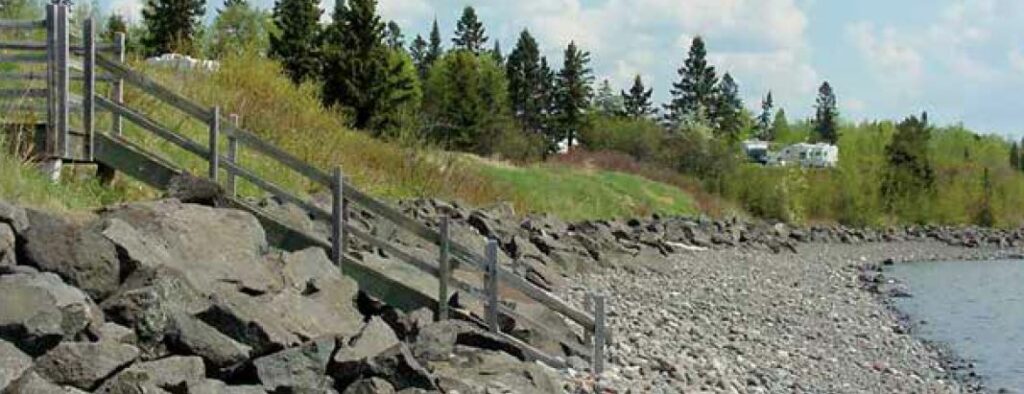
This fact sheet explains Great Lakes coastal processes and how engineered structures can affect the shoreline.
Great Lakes Coastal Shore Protection Structures and Their Effects on Coastal Processes
Overview
The publication Great Lakes Coastal Shore Protection Structures and Their Effects on Coastal Process reviews how the coastal processes function on the Great Lakes with influences from the marine climate, area geology, weather, and human-induced effects. It also outlines three common Great Lakes coastal structures, what effect they have on wave action and therefore shoreline responses and scale of coastal protection. These structures include shore parallel structures, shore perpendicular structures and offshore structures. Lastly, this document briefly explains how coastal engineers model and monitor coastal structures and shorelines. You can download this document for free on the Sea Grant webpage.
Audience
This publication is designed to help property owners, community officials, and land managers to understand how coastal processes on the Great Lakes work and what impact shore protection structures have on the shoreline. It can be used to increase awareness of the coastal natural processes at work and promote conscious structure design to protect people as well as the environment.
Decision Support
This publication breaks down technical information to clearly explain how coastal processes impact the coastal shorline, how erosion or sand starvation occurs, bluff failures, how different types of wave action affect sand movement and the effect of shore protection structure. The fact sheet is intended to help users make informed decisions about best management practices and highly encourages consulting an expert or coastal engineer before constructing any coastal protection feature.
Download the document for free!




